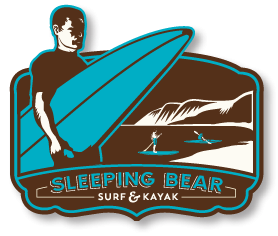Cold Water Paddling
The surface of the water is glassy flat, the calm calling you to the waters edge; and the sun is providing an unseasonably glorious warmth… the lake whispers “come play”. One problem – the surface temperature of that glorious body of water, well, it’s still hovering right around 40 degrees.

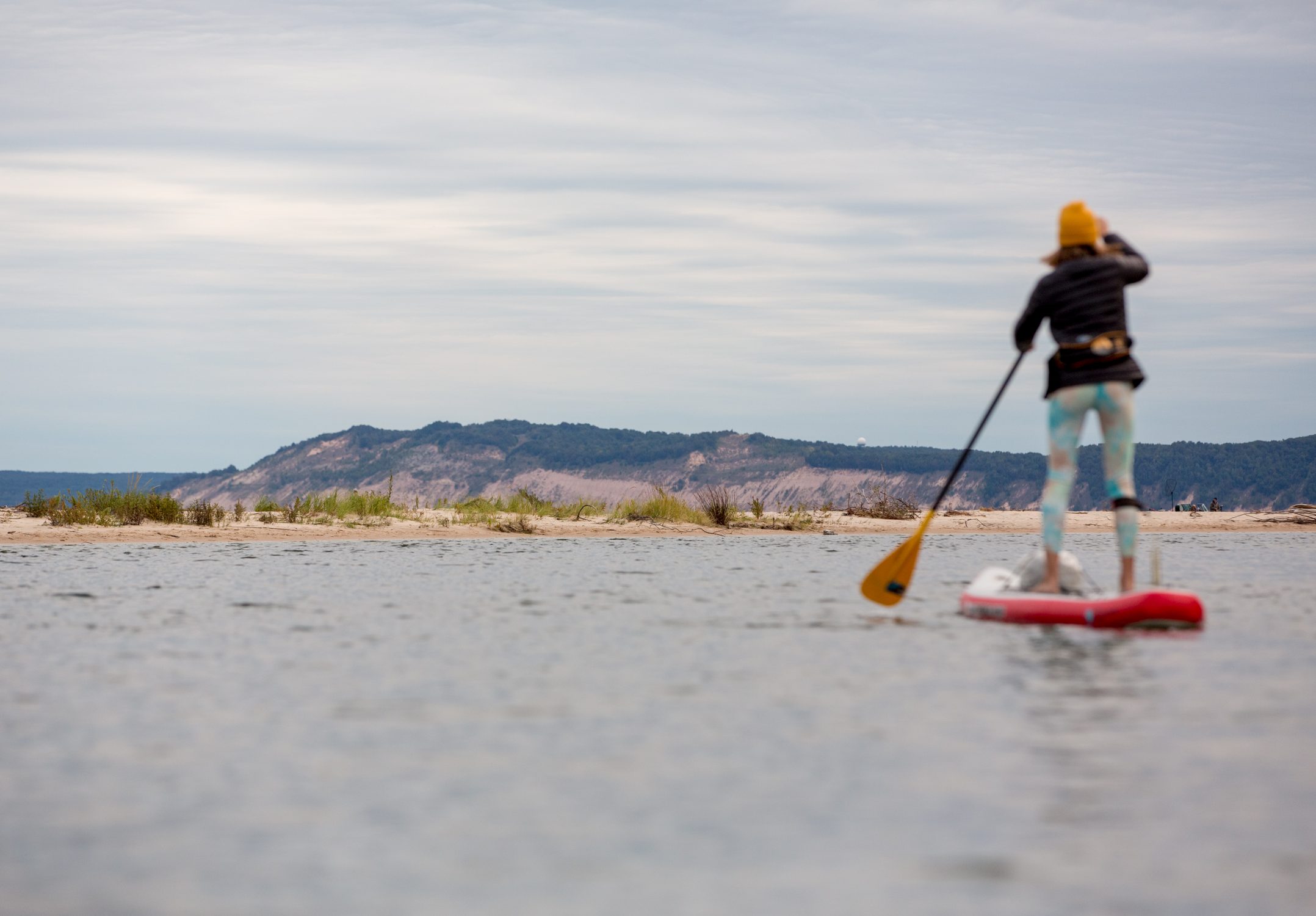


Even if the air temperature is a whopping 80 degrees on that fluke day in May, but the water is still hangin’ out at 45 degrees, we need to be aware of the danger of ‘cold shock‘. That’s the immediate shock to the system when your body hits cold water, and can occur when the water is 60 degrees or colder. Cold shock can cause pretty dramatic changes in breathing, heart rate and blood pressure which creates a greater risk of drowning even for confident swimmers in calm waters. We don’t mess with that. And yes, even confident paddlers can make goofs and end up falling over board, and, if ill prepared, could be put in a pretty uncomfortable, or life-threatening situation.

Proper gear can make the difference between paddling out v. gazing longingly and comfort v. distress.
Did you know water takes heat away from your body 26 times faster than air? Wild. So, the #1 rule of cold water paddling is to dress for immersion. Here’s a breakdown of our #1-3 options for proper paddling attire.
- Drysuits:
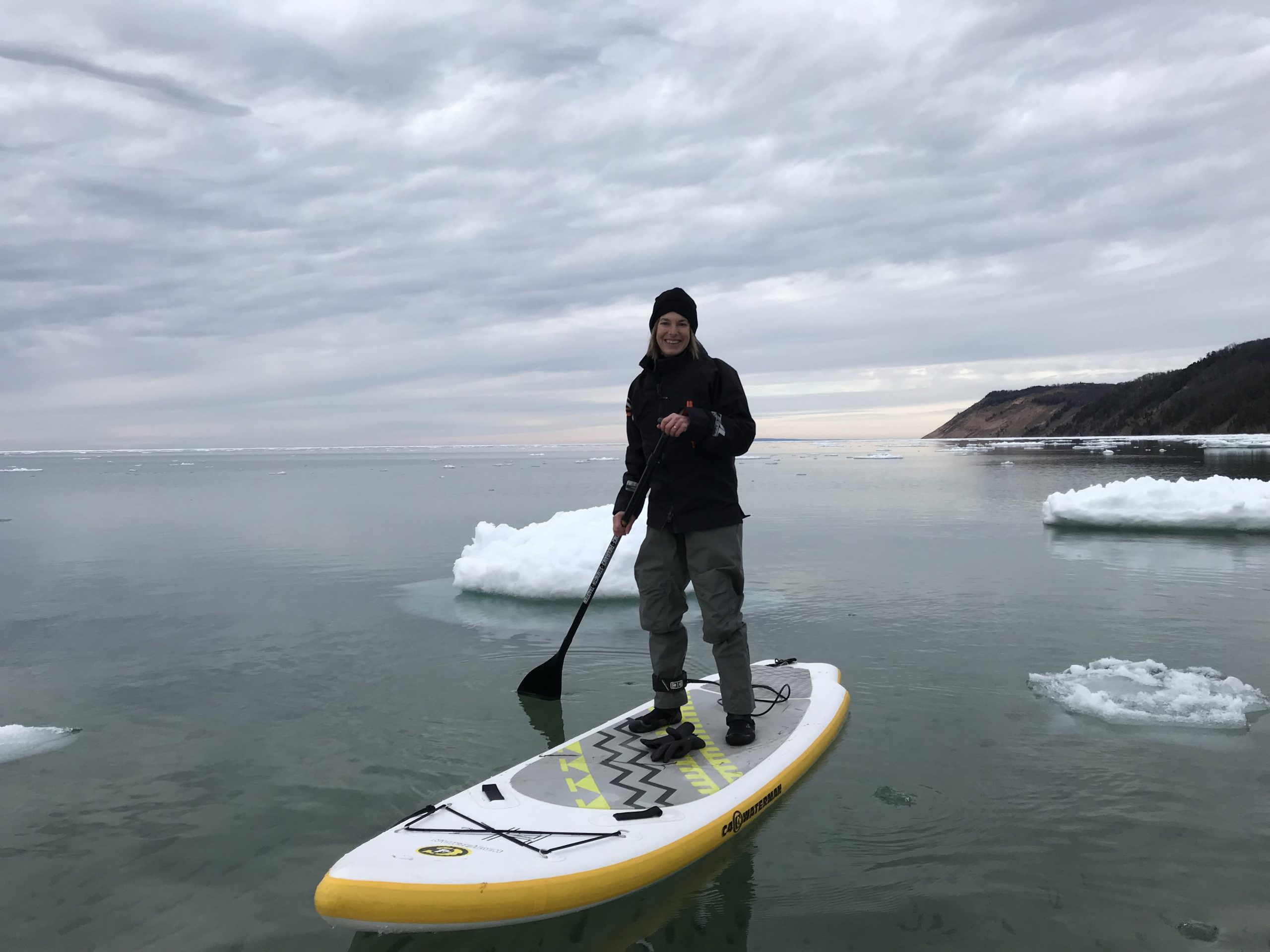
- Drysuits are the #1 most reliable piece of equipment to keep you safe on the water in the winter or early spring, or really anytime the air temperature drops below 50 degrees while the surface water temperature is below 60.
- Dry Suits are designedto keep you completely dry. Dry Suits are waterproof and watertight to prevent water entry and exposing the skin to moisture while insulating the body by keeping air between you and the suit.
- Dry Suits are worn over top of cozy base layers, mid layers, and if necessary, a puffy coat!
- While an expensive investment, it is so very much a worthwhile one and can get you on the water amidst the depths of the cold season.
- Dry Suits can be special ordered through Sleeping Bear Surf upon request : )
- Wetsuits:
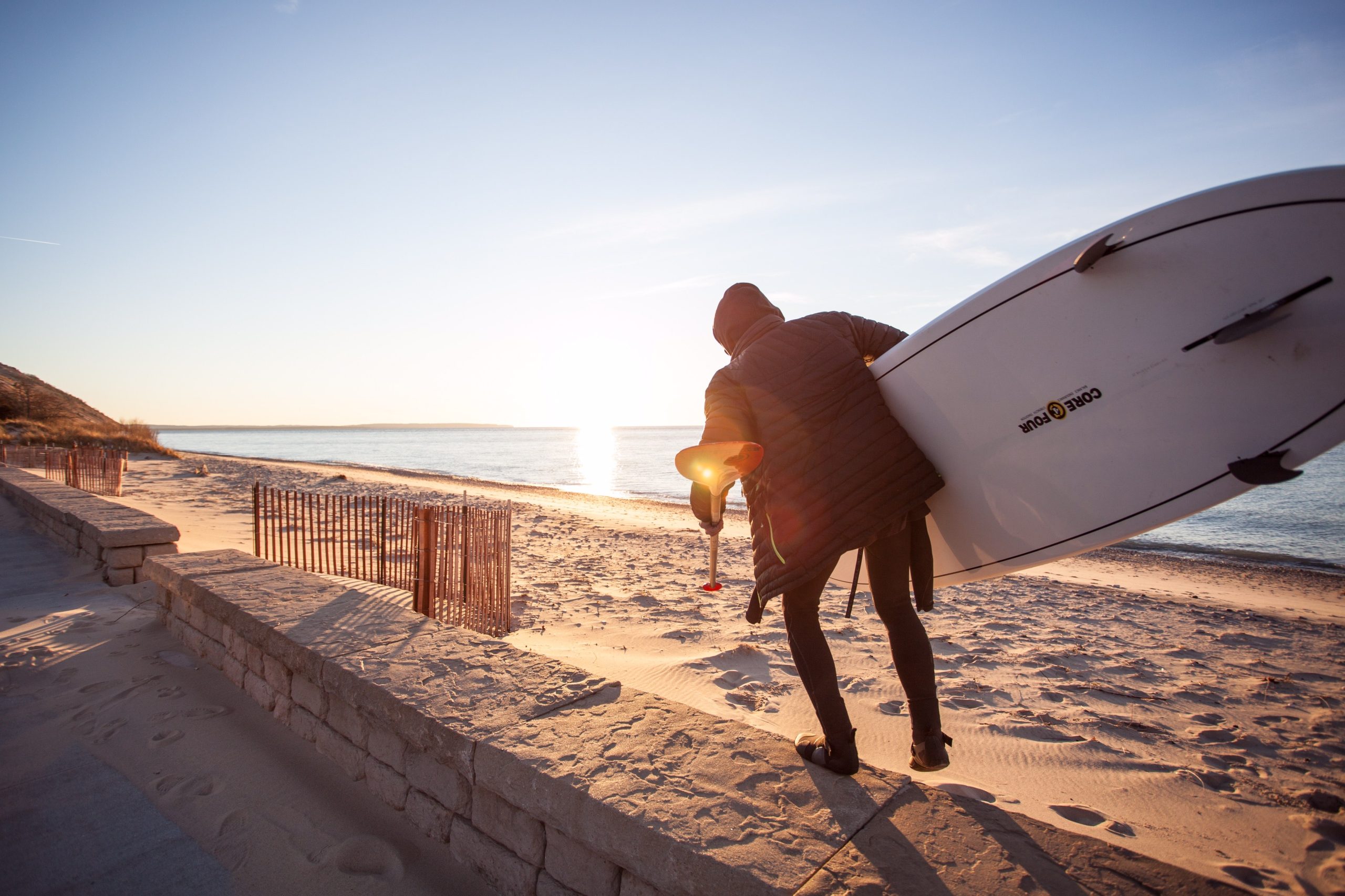
- Wetsuits are a fantastic, and versatile way to stay comfortable on the water, and if using the proper thickness of suit, can keep you comfortable submerged in the water for agood chunk of time.
- A wetsuit works by trapping a thin layer of water between you and the suit which then heats up from your body temperature. This process creates a thermal barrier that allows your body to stay warm (until it’s not).
- Make sure that you’re wearing the proper thickness of suit!
- <44 degree water temperature: 6/5mm hooded fullsuit
- <50 degree water temperature: 5/4mm hooded fullsuit
- 55-60 degree water temperature: 4/3mm fullsuit
- Make sure that you’re wearing the proper thickness of suit!
- Quick-Dry Fabrics:
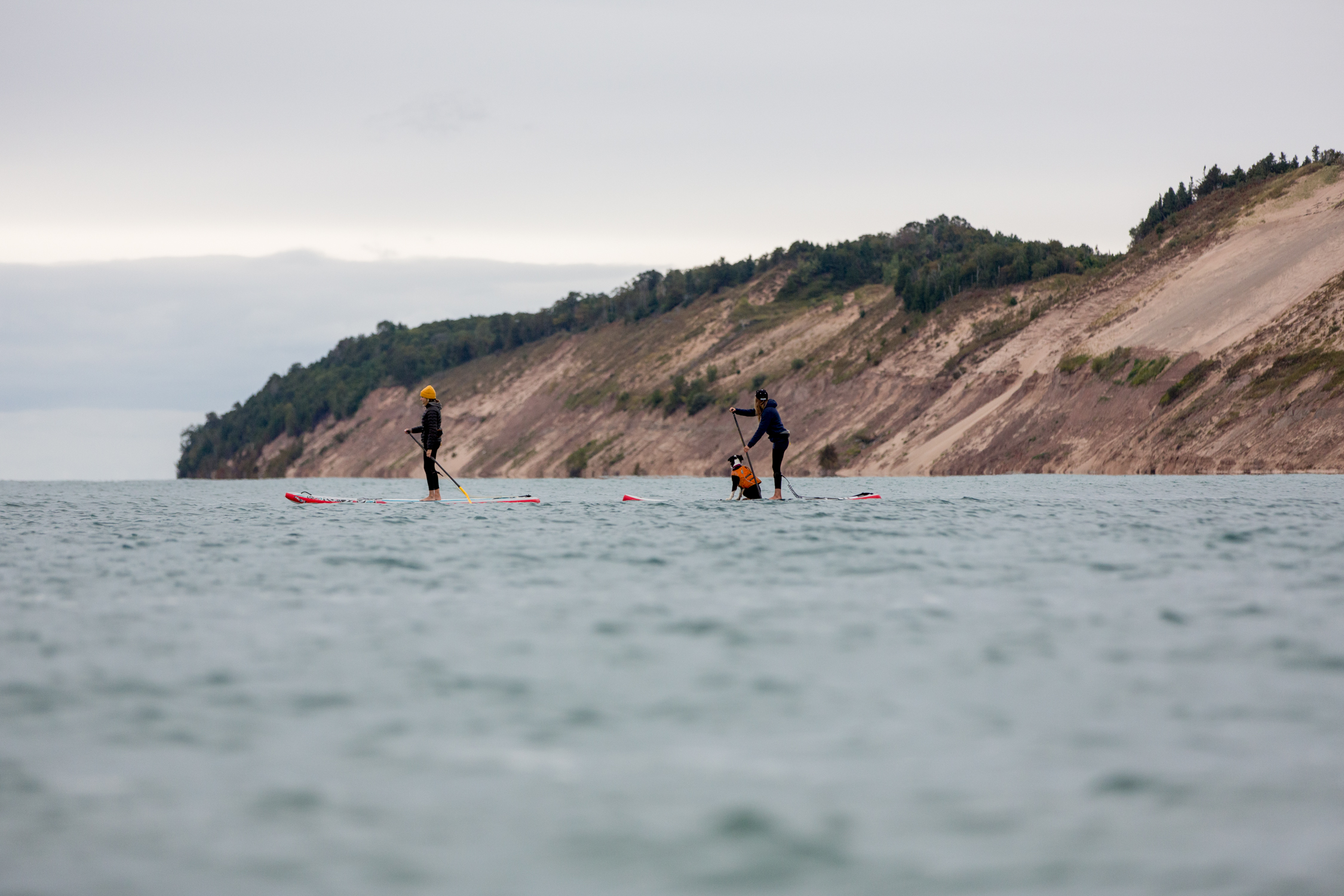
- Wearing high-quality quick-dry fleece, polyester, nylon, or wool fabrics are a great option for days on inland bodies of warmer water hovering between 55 and 60 degrees.
- This is our go-to for springtime trips down the river or warm days close to shore on the big lake with water no colder than 55 degrees.
- Do keep in mind wet fleece will not keep you warm for long unless the air temperature is well above 50 degrees. Always pack another dry layer for top and bottom in a secure dry bag to keep you cozy warm, and healthy until you get back to land.
- A big no-no to make sure to stay away from when paddling on the water anytime of year is cotton, or rayon! Such materials get wet and stay wet resulting in a very uncomfortable paddler, and also will add weight submerged in the water.
- Wearing high-quality quick-dry fleece, polyester, nylon, or wool fabrics are a great option for days on inland bodies of warmer water hovering between 55 and 60 degrees.
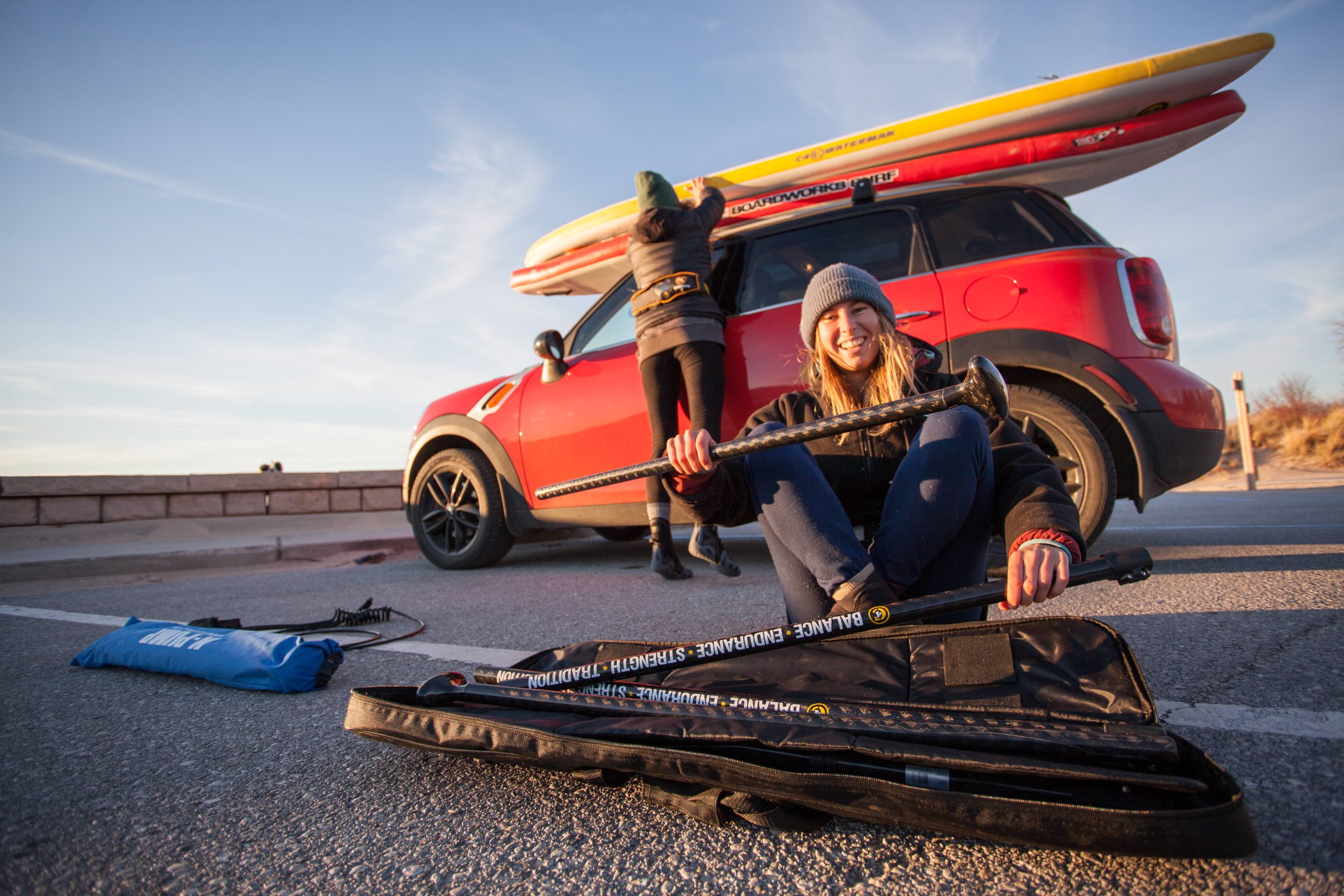 Accessories:
Accessories:- Neoprene Gloves (3mm or 5mm)
- Neoprene Boots (5mm or 7mm)
- Fleece / Quick Dry Hat
- PFD on your body (minimalist belt / auto inflate PFD or full foam PFD)
- Dry Bag with extra dry layers!
Ultimately, it is so important to know your limits, and plan accordingly dependent on the location that you are paddling & the varying water temperature of the body of water you choose to paddle! Open water paddling on the big lake would require very different type of attire than that of a trip down a shallow, narrow river.
Ah yes, and the most important piece of attire for paddling any time of year – you know this one – is a PFD!

Life Jackets save lives. Regardless of the gear you choose to wear, a life jacket is going to be your bestest, most vitally important companion. There are many types of PFDs to choose from – but the best PFD is the one you have. PFDs range from standard full chest clip jackets to minimalistic designs. The colder the temperature of the water, the greater chance for cold shock, and therefore the more important it is for you to have a foam jacket, or auto-inflate jacket that you do not have to engage in order to have floatation.
Purchase minimalistic PFDs through Sleeping Bear Surf here.
- Additional PFD varieties may be special ordered from our partners at Mustang Survival through Sleeping Bear Surf.
- If you need a PFD temporarily, PFDs can be set up for rental at Sleeping Bear Surf via a phone call.

Make sure to have all additional safety devices dependent on the craft that you are paddling.
- For paddleboarders:
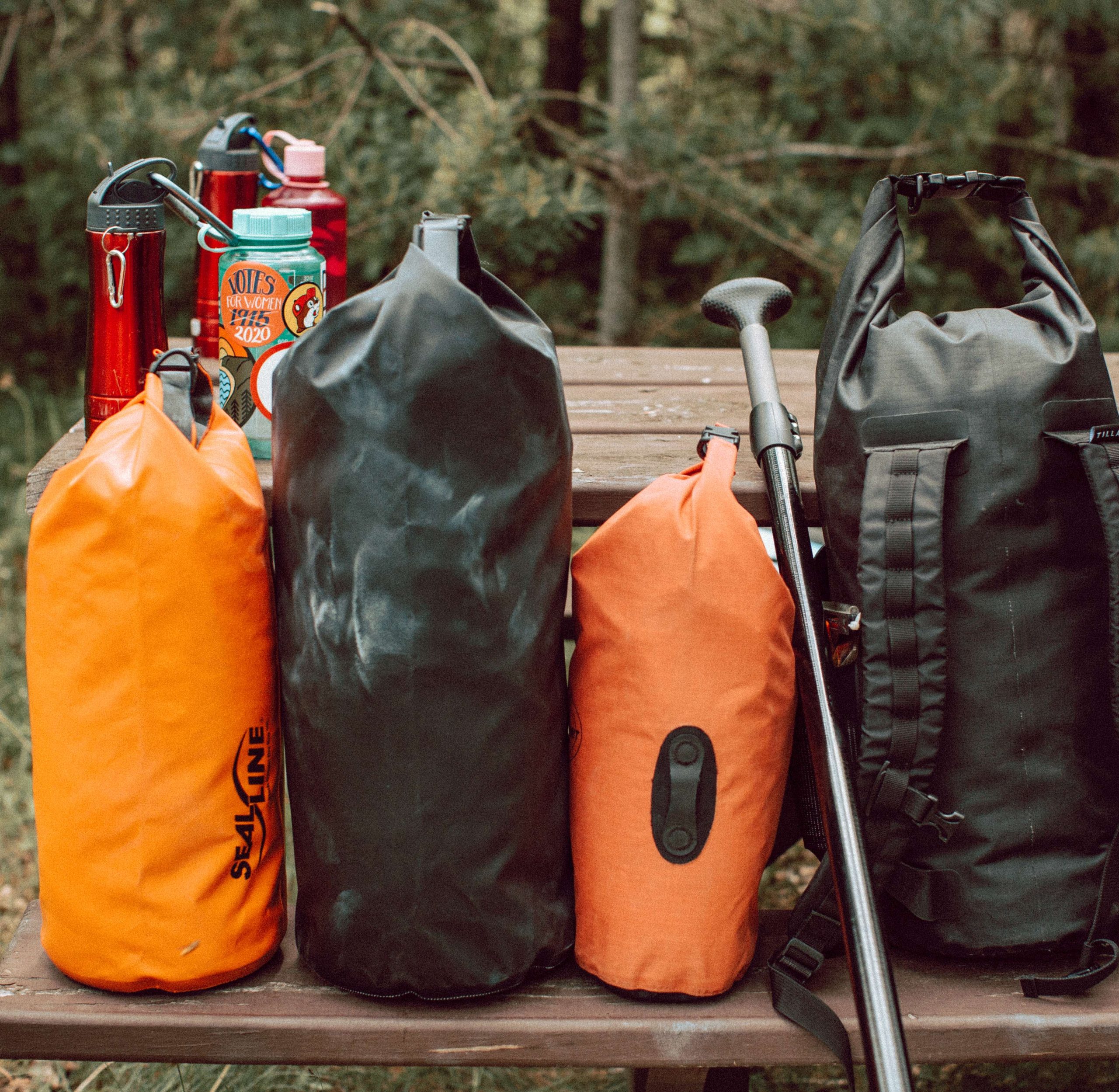
- Ensure you have a leash attached to your body upon entrance to the water
- Emergency dry layers in a secure dry bag
- Emergency signaling device (cellphone & additional item ie. whistle, flare, inReach)
- Leave a float plan with someone you trust – let them know where you’re headed, what time you get on the water, and what time you are back safely on land
- If on a kayak, or canoe:
- Ensure you have proper know-how to upright your boat before paddling out in cold water.
- As always, paddlers should carry a whistle, paddle float & bilge pump
- Emergency dry layers in a secure dry bag
- Emergency signaling device (cellphone & additional item ie. whistle, flare, inReach)
- Leave a float plan with someone you trust – let them know where you’re headed, what time you get on the water, and what time you are back safely on land
Always paddle with a buddy! It’s more fun, and offers another vital layer of safety to paddling any time of the year!

